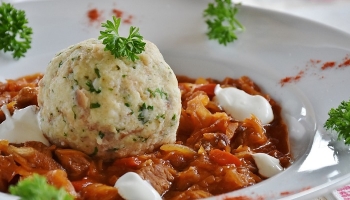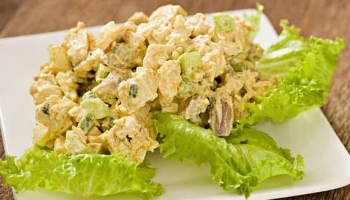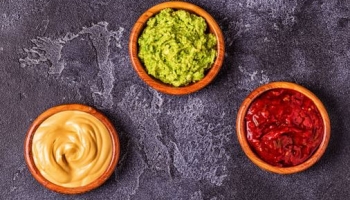You’ve got yourself a beautiful induction cooktop but you want to use your non-induction cookware on it, and you’re not sure if you can. If that sounds like you, you’re in the best place.
We’ve put together a handy guide for you to use. We’ve answered all of your burning questions about using non-induction cooking ware.
Find out how to use non-induction cookware on an induction cooktop, and get inspired with some beautiful meals you might like to cook. Plus, if you’re new to the world of induction cookware, we’ve included some basic questions and answers too just for you. So, let’s get to it!
Table Of Contents:
What is an induction cooktop?

It is really quite clever. Let’s explain. If you’ve got a traditional cooker or hob, when you turn it on, the heat has a few places to go before it even starts cooking your food. The heat warms up your cooker ring. Then, it heats up your pan, and finally, the pan’s heat moves to your actual food, and you’re officially cooking.
But an induction cooker cuts lots of that out. When you switch it on, it immediately heats the pan. So you lose an extra step, which makes the cooking part of your evening much quicker. It’s also more cost-efficient because you’re using the heat for less time.
We said it was clever!
back to menu ↑
Induction cooktop vs gas cooktop
What are the advantages of using an induction cooktop?
It is obviously faster than a gas one because it doesn’t need to heat up the ring on your hob, just the pan. But what else is great about it?
It’s energy savvy.
How so? Well, you’ve got so much more heat being spread around the cooker and the entire kitchen when you’re cooking on a gas cooktop. Think about it. Now the heat is going directly to your pan, you’re not sweating over the stove.
It’s more practical and much less messy.
Have you ever put a gas cooker on to boil your pan of rice, popped out for a minute or two, and come back to an overflowing, dangerously hot mess? We all have, haven’t we?
But with an induction cooktop, you are way less likely to have that frustrating situation happen. That’s because the induction cooker stops the heat flowing almost immediately, so when you take your pan off, it doesn’t need a minute to calm down.
Induction cooktops are quick and easy to clean
Once you’ve been slaving away in the kitchen, the last thing you want to do is spend hours scrubbing your dishes. Firstly, the induction style means you don’t need to be slaving away for hours.
And secondly, the big clean will just need a good wipe with a soapy cloth. No painful elbow grease or expensive kitchen cleaners are needed for the job.
back to menu ↑
Are there any disadvantages to going induction style?
It’s a win-win, right? There are a few potential downsides, but all in all, we’re a big fan of the induction cooktops.
They can be expensive to buy, but worth the long-term savings
It will depend on where you’re shopping as to the quality and price of your new induction cooktop. But when you think about the cost savings you’ll make in the long run, you’re likely saving more money on your electricity than you might think. So, it’s always worth a think.
It’s a different cooking experience
If you’re a real chef or just love the art of cooking up a storm in the kitchen, you might genuinely prefer the feel of cooking on gas. Lots of people say it really does feel different. So, if that’s you, stick to your traditional gas cooktop. We don’t mind!
back to menu ↑
How to Use a Non-Induction Cookware When Induction Cooking
Can you use the non-induction cooking ware on the induction cooktop? Yes! There is a misconception that you can only use induction pans and pots on these types of cooktops. We know of a clever trick you can use if you don’t have the matching cookware for your cooktop.
Your induction cooker works because it’s magnetic. It’s magic… almost! That’s why you’ll find that materials like stainless steel work perfectly.
So, how do you use cooking equipment that’s not made for induction cooking?
Answer: You need a converter disk.
back to menu ↑
Converter disk with non-induction cookware

You need to put this converter disk on your induction cooker, and then put your non-induction pan on that. Hey presto, it will work.
A word of warning though! If you want to buy an induction adapter plate, make sure you shop around and check out the reviews and product descriptions before you invest. We only advise this because some might not be the best quality.
You want to only purchase one which has non-magnetic handles, so you are safe to use it in the kitchen. And make sure it’s got a nice and steady, flat surface, otherwise, it could be dangerous. A good converter disk will be sleek and flat. A heavy disk is more beneficial for using non-induction cookware.
That way, they are perfect for heat transmission through magnetism. What’s more, the weight makes it safe to use on the cooktop. Thin ones might be flimsy, so avoid those. Take care when you’re buying and using, and you’ll be on your way to a great home-cooked meal in next to no time!
back to menu ↑
Learning to cook using the induction cooktop
Once your induction cooker has been installed, the world is your oyster. Or, in this case, there are no limits as to what you can cook up now. Don’t forget to always check the safety manual and use the child lock where appropriate. But you can get started on creating your favorite dishes.
It might take some time to get used to a new way of cooking. But don’t be put off. Spend a bit of time getting to know how the controls work before you start heating up your ingredients. There will be an ‘On off’ button, temperature controls, and a display screen somewhere.
Yummy meals to cook
Rice is an easy ‘go-to’ food to cook induction style. Whether you’re having meat or vegetables with it, you can always whip up some tender rice on your induction cooker.
Find out how to cook rice on an induction cooktop, if you’re not sure where to begin. If this isn’t your first time using an induction cooker, try out other dishes like soup, stews and so much more. Pasta meals also work great if you love cooking induction style.
Do you want to start with something super simple? Alternatively, maybe you’re on a high protein diet or you love scrambled eggs for breakfast? You can learn how to cook eggs on an induction cooktop using our step-by-step guide.
Make them just how you like them, whether that’s fried or poached, or even cook up an omelet. Then, once you’ve mastered the first dish, you can start building up your confidence in the kitchen – induction style, one meal at a time.
back to menu ↑
Summary
Welcome to the world of induction cooking, we think you’ll love it!
In summary, it’s easy to cook induction style. If induction cooking is something you’d like to do more of in your kitchen, you can now shop around to find the best one for you.
And the best part is that you’ll have your delicious meals made that little bit faster, and safer. Use our frequently asked questions to feel truly clued up before you begin your cooking journey.
back to menu ↑
Frequently Asked Questions
- Is an induction adapter plate the same as a converter disk?
- How safe is an induction cooker?
- Can I use my induction cooker if I have children around?
- My pan stopped heating up after I moved it, why is this?
- My induction cookware is making all sorts of weird noises, what do I do?
- How fast can it boil a pan of water?
- How environmentally friendly are induction cookers?
- What does induction look like compared to a gas one?
Is an induction adapter plate the same as a converter disk?
Yes! If you’re new to cooking or using an induction cooker, you might know that there are a few terms to describe the same equipment. A converter disk is the same as an induction adapter plate or interface. If you have non-induction cookware then a converter disk is the best solution for you.
back to menu ↑
How safe is an induction cooker?
Very! We’ve said how clever they are, but they also have your safety in mind too. If you switch it on, but there’s nothing in your pan yet, the induction cooktop won’t start the heat flowing. So, the inside of your pan won’t burn itself and those in the kitchen are completely safe too.
back to menu ↑
Can I use my induction cooker if I have children around?
Yes. Most induction cookers have a very intelligent child lock built into the system. So you can set your temperature and lock it. That way, you don’t need to worry about any children accessing it or fiddling with any heat settings.
back to menu ↑
My pan stopped heating up after I moved it, why is this?
This is because of the design of an induction cooktop. It’s really important to keep in mind that if you move your pan while you’re cooking, it will stop heating up. So it’s always a good idea to check, and double-check, that the heat is still on. Otherwise, things will take longer, and you’ll be even hungrier!
back to menu ↑
My induction cookware is making all sorts of weird noises, what do I do?
Don’t worry. This can be completely normal. It might buzz or click or beep. It’s a really common thing to happen with this type of cookware.
Essentially, it means it’s working, in most cases. If you’re worried something’s wrong, broken, or needs repair, you can always contact the supplier and ask them to help you out. But it can often just be that that’s the magnetism working hard to cook your food for you.
back to menu ↑
How fast can it boil a pan of water?
Faster than you might think! The results of one trial test showed that water boiled in less than 6 seconds on an induction cooker top, and over 9 seconds on a gas one. That might not seem overly quick, but if you’re cooking a big meal with lots of ingredients or pans on the go, it will all add up.
back to menu ↑
How environmentally friendly are induction cookers?
They’re more energy friendly than a gas cooker. In the same study we mentioned in the last question, they also tested how much CO2 was produced, comparing both types of cookers. A gas cooker omits over 1 pound, whereas the induction cooktop was less than 0.3 pounds. So, you can see the difference is quite big.
back to menu ↑
What does induction look like compared to a gas one?
If you’re thinking about investing in an induction cooktop, but you’re not sure if it’s the right style of cooking for you, ask yourself what you like in your kitchen. An induction cooker can have a very different aesthetic design, which is perfect for those who love a sleek, sophisticated appearance in their kitchen.
But if you prefer the more traditional style of a family kitchen and aren’t too fussed by the glossy look, maybe an induction cooker isn’t for you.
Shanny
Shanny not only has an exceptional understanding of the foodie mindset and how nutrition works, she has also achieved her Master’s Degree in Education. Outside of her academic achievements, she loves writing food blogs. It's so much more than a list of meals though! Shanny creates helpful cookware guides and delicious recipes that are easy to follow. She does all of this as a food blog writer because she loves it. That's why she spends lots of time testing out different recipes in her own home. She truly is a one-of-a-kind foodie, from her home to yours - with a story to tell, new recipes to indulge in and new tips to tantalize those tastebuds.












